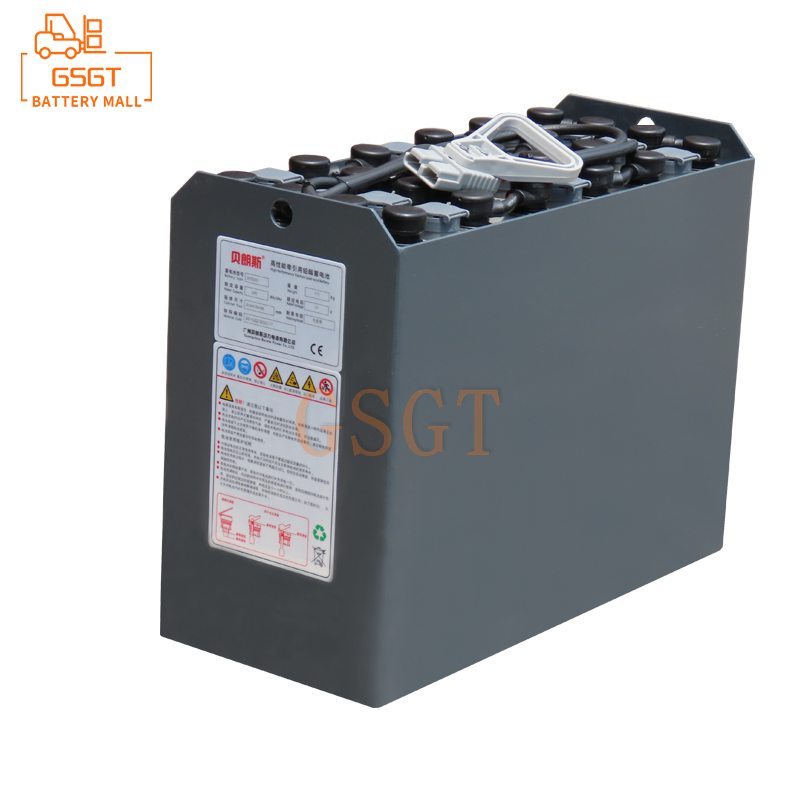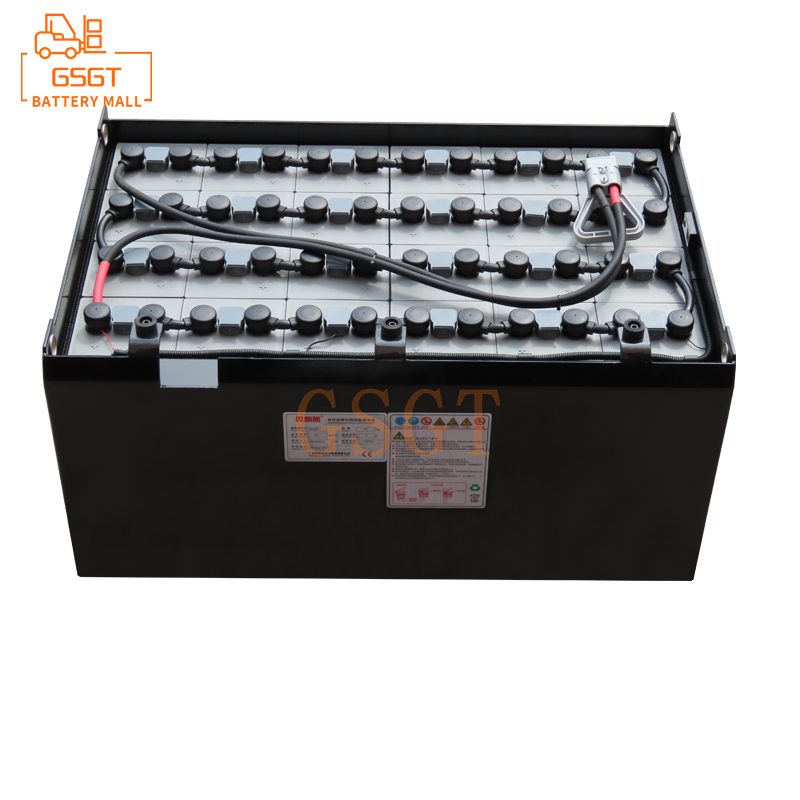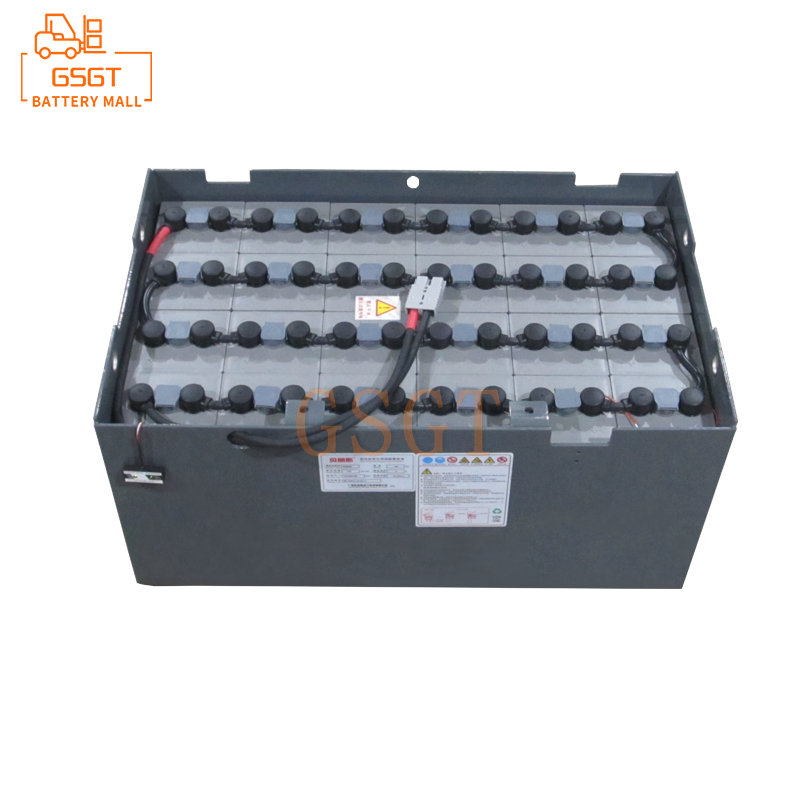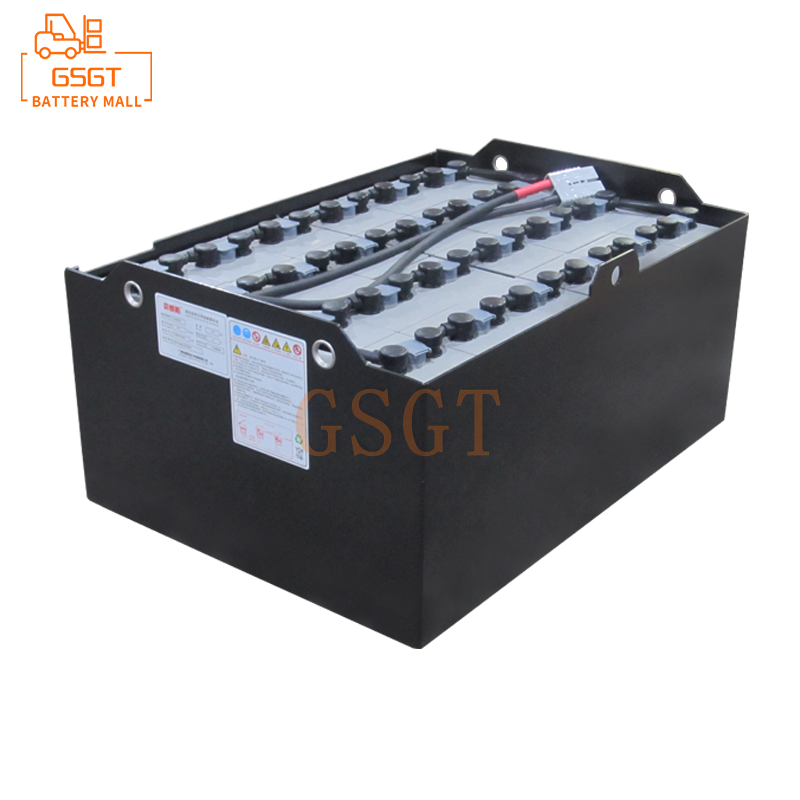Time:2025-04-23 10:02:20
Browse:634
In the modern logistics and warehousing industry, forklifts, as important handling equipment, the performance of their power core - lead-acid batteries - directly affects the working efficiency and operating costs of forklifts. Selecting the right lead-acid battery for forklifts not only ensures the stable operation of the forklifts but also reduces maintenance costs and extends the service life of the equipment. The following will elaborate in detail from multiple dimensions on how to select the appropriate lead-acid battery for forklifts.
1. Clarify the usage requirements
1. **Job Scenario Analysis**
The requirements for forklift lead-acid batteries vary greatly in different working scenarios. For instance, in an indoor warehouse, the operating routes of forklifts are relatively fixed, the working intensity is moderate, but they may need to start and stop frequently. In large outdoor logistics parks or construction sites, forklifts face complex road conditions and harsh working environments. They not only have to cope with bumps but may also encounter extreme weather conditions such as high temperatures and rain. Therefore, batteries with corresponding protection levels and performance characteristics should be selected based on the actual working scenarios. If the operation is carried out in a humid environment, it is necessary to choose a battery with good sealing performance and anti-corrosion ability to prevent electrolyte leakage and rusting of the casing, ensuring the normal use of the battery.
2. ** Consideration of Working Hours and Intensity **
Understanding the daily working hours and operation intensity of forklifts is crucial. For forklifts that operate continuously for long periods of time, such as the high-intensity work in large e-commerce warehouses during shopping festivals, large-capacity batteries are required to ensure that the power demand can be met for a long time and to avoid affecting the work progress due to insufficient power in the middle. Generally speaking, when the working time is long, a battery with a larger rated capacity should be given priority. In addition, when the operation intensity is high, the frequent acceleration, deceleration and climbing of forklifts will put forward higher requirements for the instantaneous discharge capacity of the battery. At this time, it is necessary to choose a battery with good high-rate discharge performance.
2. Pay attention to the core parameters of the battery
1.**Rated capacity**
Rated capacity is an important indicator for measuring the amount of electricity a lead-acid battery can store, and it is usually expressed in ampere-hours (Ah). The larger the capacity, theoretically the longer the forklift can work continuously. When making a choice, the required capacity should be comprehensively calculated based on the motor power of the forklift, working hours and load conditions. For instance, for a forklift with a motor power of 5kW, assuming an average power consumption of 2kWh per hour, if it needs to operate continuously for 4 hours, the required battery capacity should be at least 400Ah (2kWh÷12V×4h≈400Ah, taking a 12V battery as an example). However, when making an actual choice, it should also be taken into account that the capacity of the battery will gradually decline as the usage time increases. Therefore, a battery with a capacity slightly larger than the calculated value can be appropriately selected to ensure the working requirements during long-term use.
2. **Voltage**
The common voltage specifications of lead-acid batteries for forklifts include 24V, 36V, 48V, 60V, 80V, etc. The selection of voltage should match the electrical systems such as the motor and controller of the forklift. If the voltage does not match, it may cause the forklift to fail to start normally or cause damage to the motor and other electrical components. Generally speaking, small forklifts mostly use 24V or 36V batteries, while large heavy-duty forklifts usually employ 48V or higher voltage batteries. When making a choice, be sure to refer to the forklift's user manual to ensure that the voltage of the selected battery is fully compatible with the vehicle's electrical system.
3. **Discharge rate**
The discharge rate reflects the discharge capacity of a storage battery under different discharge currents. Batteries with good high-rate discharge performance can provide a large current in a short time, meeting the high-power demands of forklifts during start-up, acceleration and climbing conditions. The discharge rate characteristics of batteries produced by different manufacturers vary. The voltage variation and discharge time of the battery under different discharge currents can be understood by checking its discharge curve. For forklifts that need to frequently perform high-intensity operations, batteries with excellent high-rate discharge performance should be selected to ensure that the forklifts can maintain good power performance under various working conditions.
3. Examine the quality and performance of the battery
1. ** Plate Material and Process **
The plates are the core components of lead-acid batteries, and their materials and manufacturing processes directly affect the performance and lifespan of the batteries. High-quality plates usually adopt high-purity lead alloys, such as lead-calcium alloys or lead-antimony alloys. Lead-calcium alloy plates have the advantages of low self-discharge rate, small water loss and long service life. Lead-antimony alloy plates have better electrical conductivity and mechanical strength, but their self-discharge rate is relatively high. In addition, the manufacturing process of the plates is also of vital importance. For instance, the uniformity of the paste application on the plates and the curing process will affect the firmness of the bond between the active substances on the plates and the substrate, thereby influencing the charging and discharging performance and cycle life of the battery. When making a selection, you can ask the manufacturer about the material and manufacturing process of the plates and check the relevant quality inspection reports.
2. ** Electrolyte quality **
The electrolyte is mainly composed of sulfuric acid and distilled water. Its purity and concentration have a significant impact on the performance of the storage battery. High-quality electrolyte should use high-purity sulfuric acid and deionized water with extremely low impurity content to prevent impurities from causing chemical reactions inside the battery, which could lead to plate corrosion and performance decline. The concentration of the electrolyte also needs to be strictly controlled within an appropriate range. Both excessively high and low concentrations will affect the charging and discharging efficiency and service life of the battery. Generally speaking, the density of the electrolyte in a normally used lead-acid battery is between 1.24 and 1.30g/cm³ at 25℃. When purchasing a battery, you can ask the manufacturer about the quality standards of the electrolyte and relevant test data.
3. **Sealing performance**
Good sealing performance is an important factor in ensuring the safe and reliable operation of lead-acid batteries. Poorly sealed batteries are prone to electrolyte leakage, which not only pollutes the working environment but also may corrode the metal parts of forklifts and even cause safety accidents. At the same time, poor sealing will also cause the moisture inside the battery to evaporate too quickly, shortening its service life. When making a selection, carefully check whether the joints of the battery case are tight and observe if there are any signs of electrolyte leakage. In addition, some high-end batteries adopt advanced sealing technologies, such as fully sealed maintenance-free designs, which can effectively prevent electrolyte leakage and water evaporation, significantly reducing maintenance costs and usage risks. They are a good choice.
4. Consider the cost factor
1.**Procurement Cost**
The procurement cost of storage batteries is one of the important factors that users need to consider when making a choice. The prices of batteries of different brands, specifications and performances vary greatly. When making a choice, one should base it on their own budget and actual needs. Under the premise of ensuring quality and performance, select products with high cost performance. Don't choose low-quality batteries just because they are cheap; otherwise, it may lead to frequent replacements and increased maintenance costs, which would be counterproductive. You can compare the prices of different manufacturers and suppliers through multiple channels to understand the market situation and strive to purchase high-quality batteries at reasonable prices.
2. ** Usage cost **
Apart from the procurement cost, the usage cost is also a factor that cannot be ignored. The main usage costs include charging fees, maintenance fees and replacement costs, etc. Batteries with a low self-discharge rate and high energy conversion efficiency can reduce the charging frequency and time, thereby saving charging costs. Maintenance-free or low-cost maintenance batteries can reduce labor maintenance costs and downtime. Although the purchase price of this type of battery may be relatively high, in the long run, it can effectively reduce the overall usage cost. When making a choice, it is necessary to comprehensively consider both the procurement cost and the usage cost, and select an economical and practical battery product.
Selecting the appropriate lead-acid battery for forklifts requires a comprehensive consideration of multiple factors such as usage requirements, core parameters, quality performance, and cost. Only by fully understanding and weighing these factors can we select batteries with excellent performance, reliable quality and high cost performance, providing a solid power guarantee for the efficient operation of forklifts and improving the logistics operation efficiency and economic benefits of enterprises.

$800

$3050

$3050

$2720

MESSAGE
Professional And Efficient
Security
Affordable Price
Professional Services